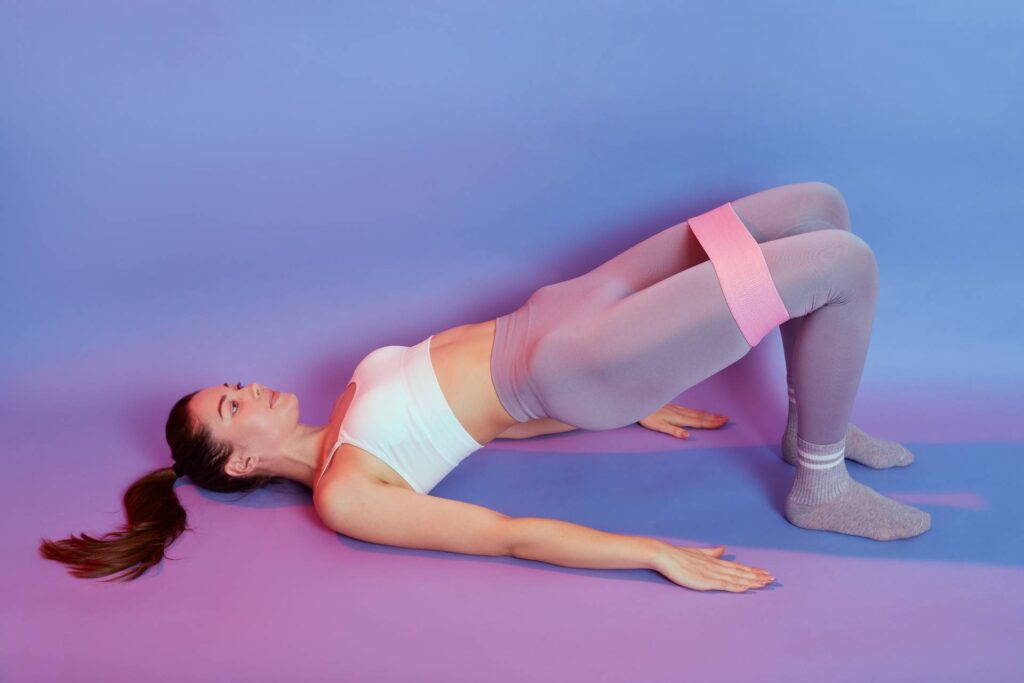Periods are a natural part of every woman’s life, but sometimes the timing can feel unpredictable. For many women experiencing irregular cycles or menstrual pain, the quest for a solution often leads to exploring natural methods—like targeted exercise—to help regulate the cycle. In this post, we delve into the exercise to get periods immediately, uncovering why movement matters and which activities might just give your body the gentle nudge it needs.
Have you ever tried using exercise as a way to regulate your cycle? Share your experiences in the comments below!

Understanding Your Menstrual Cycle
The menstrual cycle is a finely tuned process, governed by a delicate balance of hormones. Variations in stress, diet, and overall lifestyle can impact this balance, sometimes leading to delayed or irregular periods. While many factors can contribute to these changes, physical activity is one of the natural tools that may help maintain regularity.
When your body experiences consistent exercise, it helps regulate the production and balance of hormones like estrogen and progesterone. These hormones are crucial for the menstrual cycle, and even small shifts in their balance can sometimes kickstart the process. However, it’s important to remember that every body is different, and what works for one person might not work for another.
How Exercise Influences Your Cycle
Exercise has long been recognized for its numerous benefits, from reducing stress to boosting overall circulation. Here’s how it can potentially impact your menstrual cycle:
1. Improved Blood Circulation
Engaging in physical activity increases blood flow throughout the body, including the pelvic region. This enhanced circulation can help stimulate the uterus and may signal the body to initiate menstruation. Think of it as gently “waking up” your reproductive system.
2. Hormonal Regulation
Moderate exercise can help balance your endocrine system, which is responsible for hormone production. By maintaining a balanced hormone level, you may find that your cycle becomes more predictable. Certain activities, especially those that are low-impact, can promote a natural rhythm without overwhelming your body.
3. Stress Reduction
High levels of stress are known to disrupt the menstrual cycle. Regular physical activity, such as yoga or brisk walking, helps lower stress hormones like cortisol. With reduced stress, your body may be better equipped to maintain regular hormonal cycles, potentially triggering your period when it’s delayed.
Interactive Poll:
Which exercise has helped you manage your menstrual cycle best?
- Yoga
- Brisk Walking
- Stretching/Light Aerobics
- Other (Let us know in the comments!)
Best Exercises to Get Periods Immediately
While there is no guaranteed “magic” exercise that works for everyone, certain activities have been noted for their potential to support menstrual health. Here are some exercises that might help encourage the onset of your period:
1. Yoga Poses
Yoga is renowned for its calming benefits and its ability to stimulate various parts of the body. Consider incorporating the following poses into your routine:
- Legs Up the Wall (Viparita Karani):
This restorative pose encourages blood flow to the pelvic area and can help relax the muscles, reducing menstrual pain. - Forward Bend (Uttanasana):
A deep forward bend can relieve tension in the lower back and abdomen, areas that are often associated with menstrual discomfort. - Cobra Pose (Bhujangasana):
This gentle backbend can open up the chest and abdomen, aiding in overall circulation.
2. Brisk Walking
A simple brisk walk can be incredibly effective. It’s low-impact and accessible to most women, and it helps stimulate the body’s natural rhythms. Aim for a 30- to 45-minute walk at a comfortable yet purposeful pace. The key is to maintain consistency so that your body starts to recognize and respond to the routine.
3. Pelvic Floor Exercises
Targeting the pelvic floor can be beneficial for enhancing blood flow in the lower abdomen. Kegel exercises, for example, help strengthen the muscles in this area, which can contribute to a more regulated cycle. To perform a basic Kegel exercise, contract your pelvic muscles as if you’re trying to stop urinating mid-flow, hold for a few seconds, and then relax. Repeat this sequence multiple times throughout the day.
Follow along with our short video demonstration of these yoga poses and pelvic floor exercises. Let us know which routine feels most effective for you!
Additional Lifestyle Factors
While exercise is a powerful tool, it works best when paired with a healthy lifestyle. Here are some additional tips to support your menstrual health:
Nutrition
A balanced diet rich in fruits, vegetables, whole grains, and lean proteins can contribute to hormonal balance. Certain nutrients, like magnesium and vitamin B6, play a role in reducing menstrual pain and supporting a healthy cycle. Incorporate foods such as leafy greens, nuts, and fish into your diet for added benefits.
Hydration
Staying well-hydrated is essential for overall health. Drinking enough water helps regulate bodily functions and can alleviate some symptoms of menstrual discomfort. Aim for at least eight glasses of water a day, and consider herbal teas that are known for their calming properties.
Sleep and Stress Management
Adequate sleep is crucial for maintaining hormonal balance. Poor sleep patterns can exacerbate stress, further disrupting your menstrual cycle. Establish a regular sleep routine and consider mindfulness practices such as meditation or deep-breathing exercises to help reduce stress levels.
Managing Menstrual Pain
Many women experience menstrual pain, which can range from mild discomfort to more severe cramping. Exercise is one natural way to help manage this pain, but combining it with other self-care strategies can be even more effective.
Self-Care Strategies
- Warm Compress:
Applying a warm pad to your abdomen can soothe cramps and relax tense muscles. Use this in conjunction with your exercise routine for added relief. - Gentle Stretching:
Incorporate light stretching before and after your workout to reduce muscle tension and enhance flexibility, which may help alleviate cramping. - Mindfulness and Relaxation:
Techniques such as meditation, progressive muscle relaxation, or even a warm bath can help calm your mind and body, reducing the intensity of menstrual pain.
Have you tried combining exercise with other self-care methods? Share your go-to strategies for managing menstrual pain in our comment section!
When to Seek Professional Guidance
While exercise and lifestyle adjustments can offer significant benefits, it’s important to recognize when professional help is needed. If you experience severe menstrual pain or notice a significant change in your cycle, consulting a healthcare provider is a smart next step.
For those in the Jaipur area, Dr Mamta Gupta is a trusted gynaecologist in Jaipur who specializes in women’s health. She can offer personalized advice and, if needed, recommend further treatment options. Additionally, for those facing fertility challenges, she can guide you to the best IVF centre in Jaipur, Srishti Fertility and IVF Centre, ensuring you receive comprehensive care tailored to your needs.
Q&A Corner:
Have questions about your cycle or need advice on managing menstrual pain? Drop your questions below, and our experts will be happy to help!
Integrating Exercise Into Your Daily Routine
To see real benefits, consistency is key. Here are some practical tips to help you integrate these exercises into your daily life:
1. Set a Routine
Create a daily or weekly schedule that includes time for physical activity. Even 20-30 minutes of focused exercise can make a difference over time. Consistency not only helps regulate your cycle but also boosts overall health.
2. Listen to Your Body
Pay attention to how your body responds. If a particular exercise or routine seems too strenuous, consider modifying it to better suit your needs. The goal is to support your body without adding stress or discomfort.
3. Mix It Up
Variety can keep your routine interesting and prevent monotony. Alternate between yoga, brisk walking, and pelvic floor exercises to maintain a balanced approach. This variety not only keeps you engaged but also addresses different aspects of physical health.
4. Track Your Progress
Keep a journal or use a period-tracking app to monitor how your body responds over time. Recording your experiences can help you identify patterns and adjust your routine accordingly. Noticing improvements, even small ones, can be very encouraging.
Real-Life Success Stories
Many women have found relief and improved menstrual regularity by incorporating exercise into their routines. While every individual’s experience is unique, here are a couple of inspiring anecdotes:
- Anjali’s Story:
Anjali, a 28-year-old from Jaipur, struggled with irregular cycles and frequent menstrual pain. After starting a routine of daily brisk walks and a few yoga poses, she noticed that her cycle began to normalize within a few months. “It wasn’t an overnight miracle, but the steady improvement made a huge difference,” she says. - Priya’s Journey:
Priya had always been active but was unaware of the specific benefits of targeted exercises. After reading about pelvic floor exercises and incorporating them into her routine, she experienced a significant reduction in menstrual pain. “Understanding how these exercises work helped me take control of my health,” she explains.
Interactive Callout:
Do you have a personal success story or tips on using exercise to support your menstrual health? We’d love to hear from you—share your story in our community forum!
Conclusion
While there is no one-size-fits-all solution for triggering your period immediately, adopting the right exercise to get periods may offer a natural and effective approach. By incorporating gentle activities such as yoga, brisk walking, and pelvic floor exercises, you can boost blood circulation, reduce stress, and support hormonal balance—all of which may help in regulating your menstrual cycle.
Remember, these methods are best used as part of a comprehensive approach to health that includes proper nutrition, hydration, and adequate sleep. If menstrual pain persists or if you notice significant changes in your cycle, consider consulting a healthcare professional.
Your journey towards a healthier, more balanced cycle is personal, and every small step counts. Embrace the process, stay consistent with your routines, and don’t hesitate to reach out for support when needed.
What exercise or routine has made the biggest difference in your menstrual health? Let us know in the comments or join our next live discussion on women’s health tips!
Stay active, stay healthy, and here’s to embracing your natural rhythm every step of the way.

